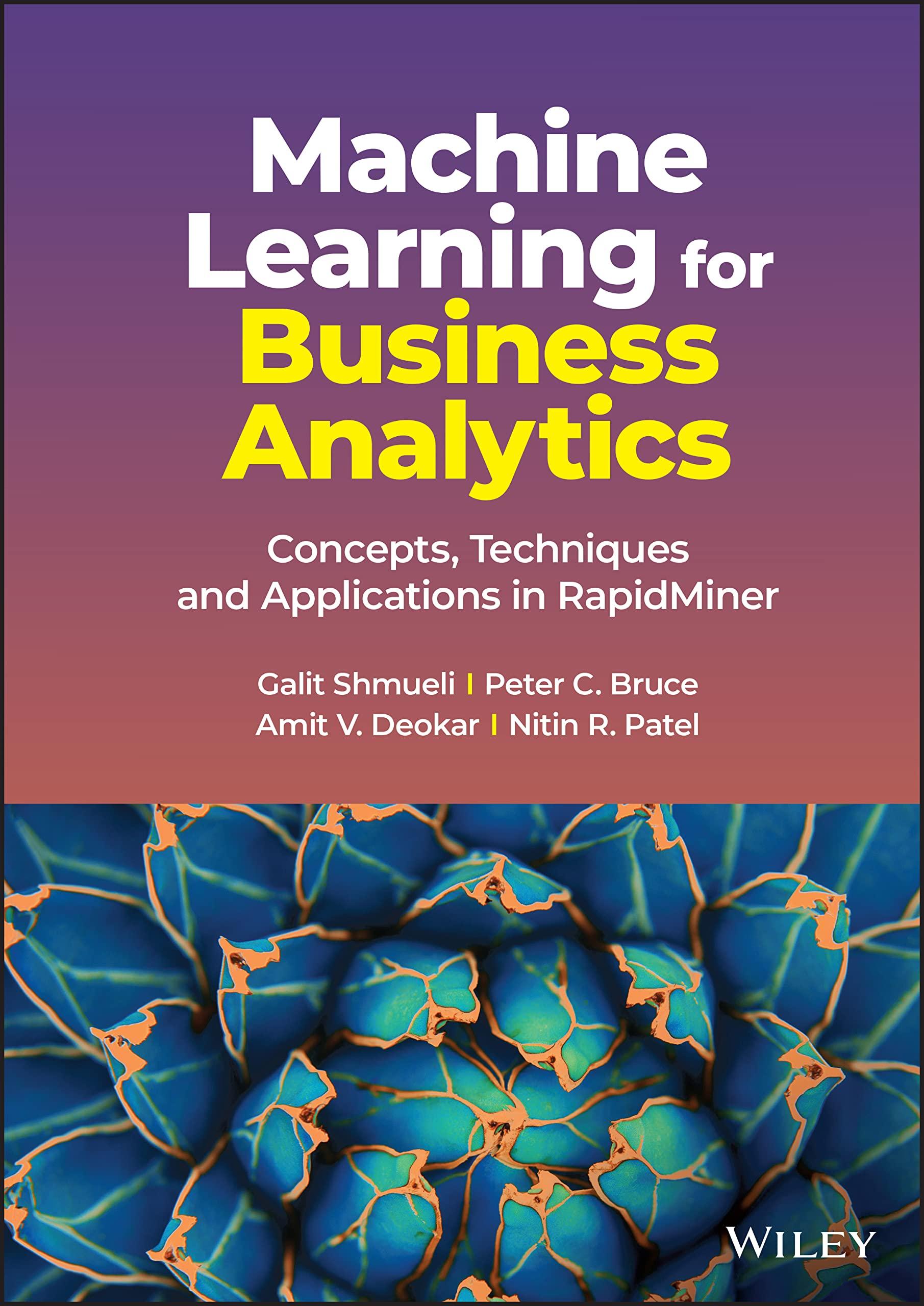Acceptance of Consumer Loan. Universal Bank has begun a program to encourage its existing customers to borrow
Question:
Acceptance of Consumer Loan. Universal Bank has begun a program to encourage its existing customers to borrow viaa consumer loan program. The bank has promoted the loan to 5000 customers, of whom 480 accepted the offer. The data are available in file UniversalBank.csv. The bank now wants to develop a model to predict which customers have the greatest probability of accepting the loan, to reduce promotion costs and send the offer only to a subset of its customers.
We will develop several models and then combine them in an ensemble. The models we will use are (1) logistic regression, (2) k-nearest neighbors with k = 5, (3) classification trees,and (4) naive Bayes. Use the default values of each model operator in RapidMiner. Preprocess the data using the steps shown in Figure 10 .3 (Chapter 10) one exception is that we do not include the Nominal to Numerical operator for dummy coding, since these model operators can work well with nominal attributes directly. Partition the data: 60% training and 40% validation.
a. Fit models to the data using the following modeling operators: (1) Logistic Regression, (2) k-NN (with k = 5), (3) Decision Tree, and (4) Naive Bayes. Use Personal Loan as the target attribute. Report the validation confusion matrix, accuracy, precision, recall, and AUC for each of the models.
b. Report the first 10 records for the validation data for each model showing the predicted class and propensity (i.e., confidence) values for the positive class. For these records, manually compute and report the confusion matrix and accuracy for each of the models. Taking a majority vote of predicted class by each model, manually compute and report the predicted class for these records. Finally, compute and report the confusion matrix and accuracy based on the majority vote predictions for these records.
c. Use the Vote operator to create an ensemble model that is based on the majority vote of predicted target values by the four models. Report the validation confusion matrix, accuracy, precision, recall, and AUC for the ensemble model.
d. Report the first 10 records for the validation data for the ensemble model showing the predicted class and propensity (i.e., confidence) values for the positive class, and manually compute the confusion matrix and accuracy based on these records. Do the ensemble vote model predictions, confusion matrix, and accuracy match with the manually computed predictions earlier?
e. Compare the model performance metrics for the four individual models and the ensemble model.
Step by Step Answer:

Machine Learning For Business Analytics
ISBN: 9781119828792
1st Edition
Authors: Galit Shmueli, Peter C. Bruce, Amit V. Deokar, Nitin R. Patel






